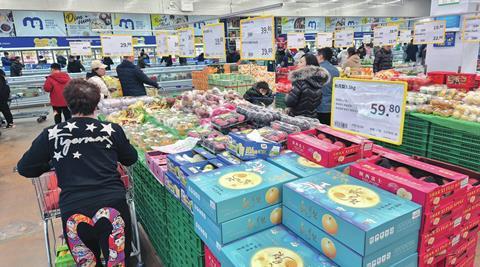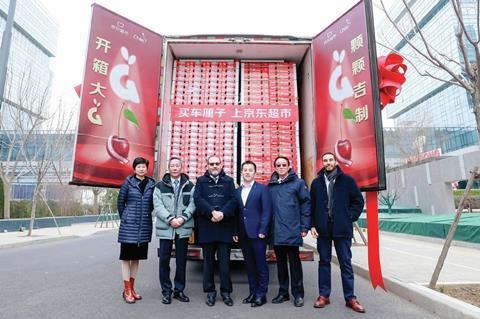Unwavering demand for high-quality, high-value products is set to drive growth despite economic caution as the Lunar New Year approaches
As 2025 begins the fresh fruit trade in China is eagerly preparing for the upcoming Lunar New Year (LNY) holiday sales season. Despite a sluggish economy, there are encouraging signs that the market will improve for the Year of the Snake.

“This year, we see fewer natural disasters in the Southern Hemisphere, which provides favourable growing conditions for many products,” says a representative of Joy Wing Mau Group (JWM). “China has always been a market that values quality.”
Vivian Wang, Dole China marketing director, believes the LNY season will remain a peak season for fruit consumption in China.
“Fruit is the top choice for many consumers buying LNY goods. According to data from digital freight platforms, since January 2024, fruit as a category has seen the largest increase in freight volume among all LNY products, with a nearly 90 per cent growth compared to regular days. This growth trend is expected to continue into 2025,” says Wang.
Still, as with the previous years since the pandemic, major retailers including JD.com remain cautious about the extent of Chinese consumers’ enthusiasm for holiday spending.
“Consumers are indeed becoming more careful with spending, placing greater emphasis on the value-for-money ratio,” says a representative at JD Super, JD.com’s supermarket division. “We retailers need to excel further in terms of product quality, pricing, and service.”
High-cost performance key

Chilean cherries have long dominated LNY holiday sales in China. The anticipated significant increase in production this season will likely have a major impact on China’s fresh fruit market as a whole.
“Not only the volume, but the quality of Chilean cherries has notably improved compared to last year, especially the Santina variety,” says JD Super representative. “For JD.com, cherries are a great traffic driver. If they sell well, other products, whether domestic or imported fruit, are also likely to perform well.”
While the increased supply will likely drive down prices and improve sales, for Zhang Xianghai, general manager of the Fresh Food Procurement Centre at Benlai.com, it might not be all good news for other fruit products.
“Since cherries are so popular during the festive season, they may capture an even larger market share, which could impact the sales and pricing strategies of other fruit products,” he points out.
According to Wang, a decline in average transaction value is “already a reality” in the China market, and Dole China is looking to lean into this trend in the LNY season.
“Fruit products priced below Rmb100 (US$14) are favoured by consumers. Rather than stockpiling large quantities, they prefer purchasing in smaller quantities more frequently to ensure freshness,” she explains. “This year, Dole has introduced various small-pack fruit options to retail channels with positive market feedback.”
For JD Super, direct sourcing is another way of reducing costs and providing more value to consumers.
“There is increased demand for high-cost performance fruit directly shipped from the producing regions. In other words, consumers may not be as concerned with the appearance of the fruit, but more focused on its taste. As long as it tastes great and is affordable, it will be very popular,” he says.
Despite having a smaller spending budget, one thing is clear: Chinese consumers today are increasingly unwilling to sacrifice fruit quality or food safety to save money. This presents an opportunity for fruit brands to build trust with consumers, and to attach more value to their products, according to Clark Xiao, chief executive of Trendforsee Consulting.
“There is a strong demand for safe, fresh, and high quality agricultural products. The growth potential in the fruit industry lies here,” says Xiao. “Branding is crucial. Only by achieving ‘branding’ can companies meet market demand, enhance value, and build competitive barriers.”
JWM echoes Xiao’s perspective.
“Fruit consumption (per capita) in China is still far lower than that in western countries, but the pursuit of high-quality fruit has never stopped here,” says the representative. “Chinese consumers’ aspiration for a better life has never ceased. Good varieties, high quality, excellent brands, and comprehensive services are the constant themes for developing the Chinese market.”
For more in-depth coverage of the state of Asian markets ahead of Lunar New Year subscribe to read the December/January edition of Asiafruit magazine.



